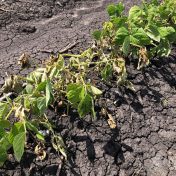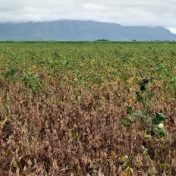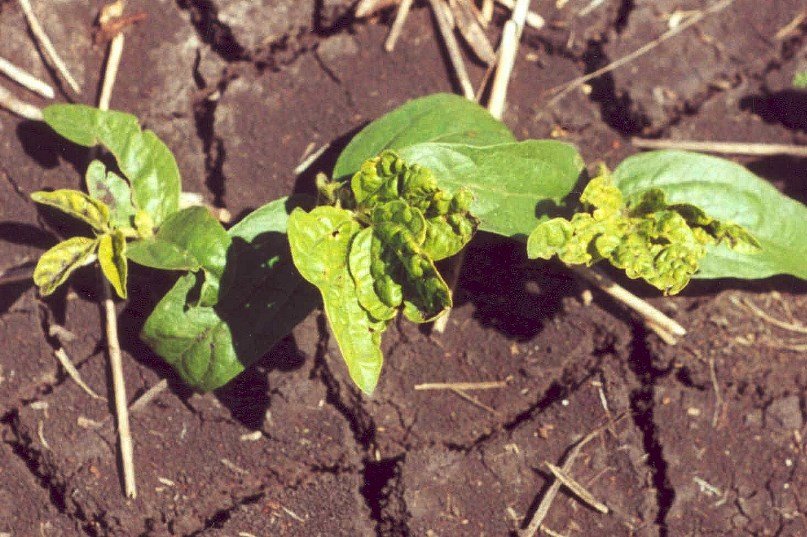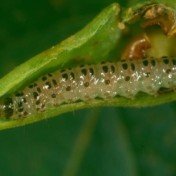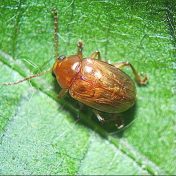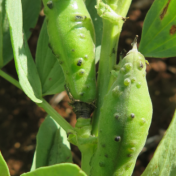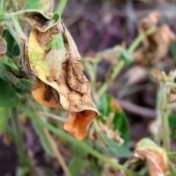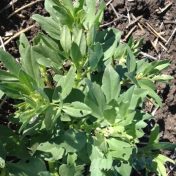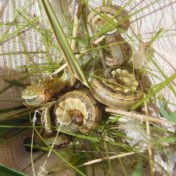Several growers and agronomists across southern Queensland have reported extensive damage to their mungbean crops due to Fusarium wilt this season. Large areas of affected paddocks have plants that are wilted or dead, resulting in significant yield losses. The results of DAF annual disease surveys over the last five years have found that the disease is most common in crops… Read more »
Since early March 2020, soybean growers in the Burdekin have seen significant damage to their crops. Close inspection of crops found many with soybean stem fly damage as well as leaf spots, and stem and pod lesions. Severely affected plants have suffered complete and rapid leaf defoliation. In many crops, plants did not collapse until the late pod-fill stage, when… Read more »
Leafhoppers (also known as jassids) and seedling thrips are extremely abundant in Central Queensland this summer. The vegetable leafhoppers (Austroascra viridigrisea) are very much an ‘in your eye’ pest, with swarms of the small (3mm) bright green critters flying up when disturbed in-crop. In contrast, the cotton seedling or cereal thrips (Thrips tabaci) are hiding out of sight, down in… Read more »
Observations from recent Pulse Check field days in CQ Bean podborer (Maruca vitrata) and beet webworm (Spoladea recurvalis) are on the move in Central Queensland (CQ) mungbean crops. While both species may also be active in other mungbean regions, bean podborer is most likely to occur in coastal (e.g. the Burdekin) and subcoastal (Biloela, Kingaroy) regions. Bean podborer is a… Read more »
Rhyparida sp. (swarming leaf beetles) have been reported in some Burdekin soybean crops. While the risk of outbreaks has declined as leaves dry off, growers and consultants are reminded to keep a lookout for this sporadic but sometimes very damaging pest. Monolepta sp. (redshouldered leaf beetles) have also been observed in some crops. What to look for Dead leaves are… Read more »
In 2019, many of the faba bean crops have growths on pods. There has been much debate over the years about the cause/s of the lumps seen on the pods of faba beans; with some attributing it to thrips, or more recently to green mirid feeding. The growths are called oedema or intumescences, and are caused when the uptake of… Read more »
UPDATE (1 October 2019): High numbers of moths are still being reported in this region. Continue to check soybean crops for this pest. Reports have come in of major soybean moth activity in winter-planted soybeans in the Burdekin and Mackay regions. Some of the outbreaks caught all concerned by surprise, and one report came from a crop barely 10 days… Read more »
While drought has dashed the planned rotations of many growers, there is still a risk of pest outbreaks at this time of year. Below are some of the most common to keep an eye out for. A note on withholding periods following insecticide use in crops that are diverted to stock If insecticide treatments have been applied to crops which… Read more »
Armyworm infestations of barley crops, in particular, are being reported from southern NSW to the Darling Downs. Large numbers of moths are also being seen around lights at night. It is not unexpected that armyworm would be abundant this spring as some of their source areas (Channel Country, North Western Queensland) would have received significant rainfall or flows earlier in… Read more »
Outbreaks of Bruchidius mackenziei (unofficially called the soybean bruchid) have been reported recently in soybean crops in the South Burnett and North Queensland. The bruchids were detected at harvest and postharvest, their timing matching previous reports of this pest from the Darling Downs and Burnett in 2009/10. Bruchidius mackenziei is a native bruchid that is most likely not a true… Read more »
